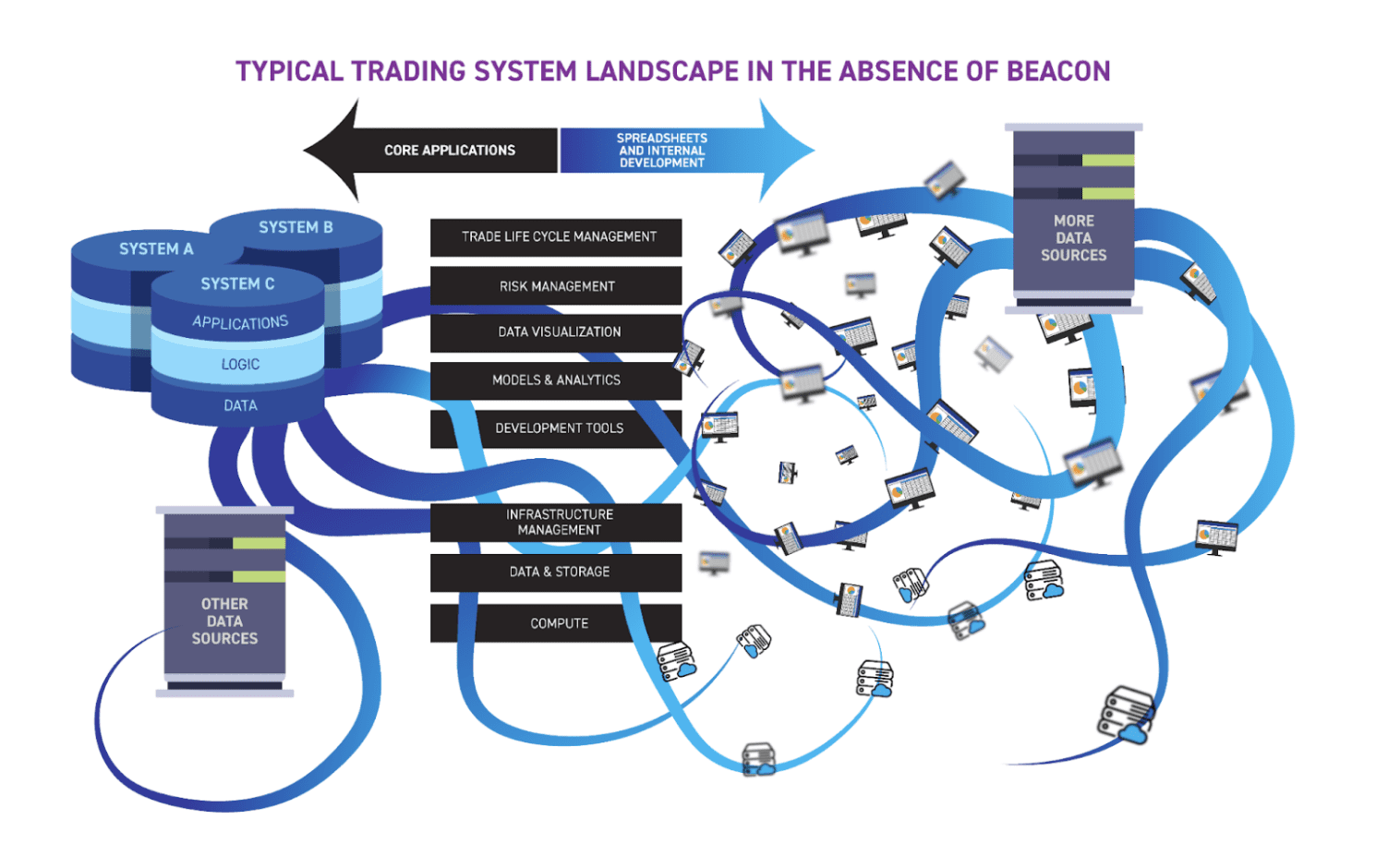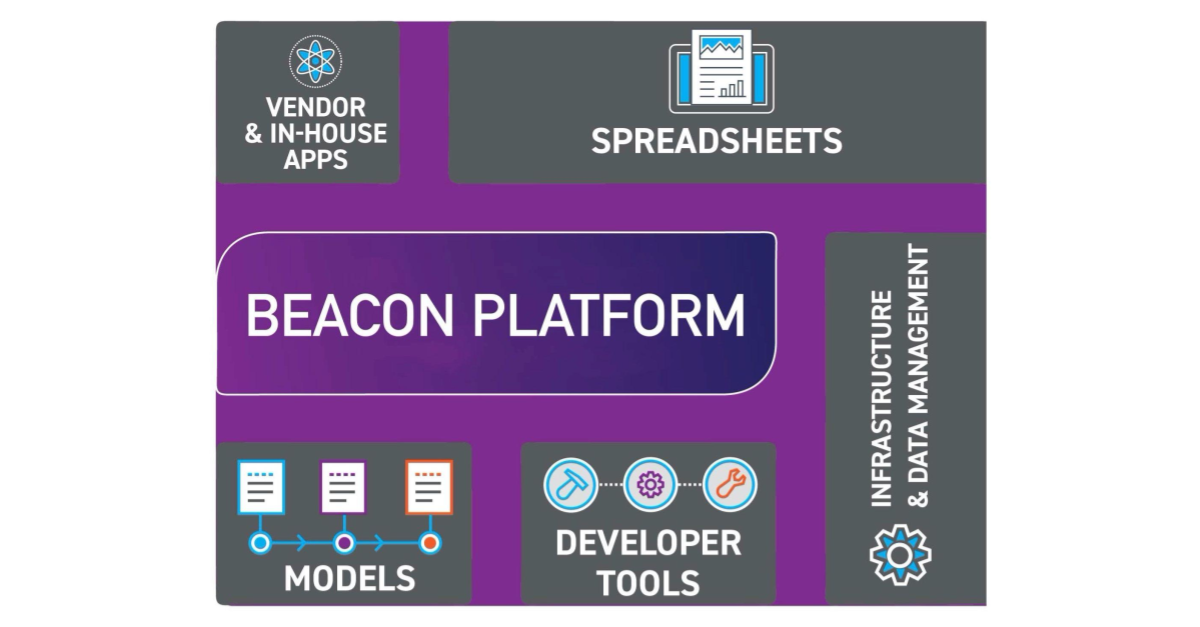The Hydra in Greek and Roman mythology was a multi-headed serpent that spawned two new heads when one was cut off. Modern technology stacks can quickly grow to resemble this beast. Start with a core set of applications that support vanilla securities, a few canned scenarios, and basic risk reports. Then add a sprawling set of spreadsheets, databases, and internal development with varying degrees of support, reliability, and scalability. The challenge is how to tame this technical Hydra, stopping the growth without spawning any more.
From pre-trade analysis and curve construction through order management, P&L explains, risk frameworks, and reporting demands, the Hydra of financial institutions is a series of screens, logins, and duplicate data entry. Over time, new asset types, financial models, and regulations increase the complexity, spawning more spreadsheets, point solutions, and data sources. This slows down operations with reconciliation activities and consumes an increasing share of technology resources patching and debugging poorly integrated systems, reducing accuracy, consistency, and flexibility.
How does Beacon help?
The answer is that Beacon is a platform, not an application. Beacon provides a comprehensive, enterprise-scale environment that can interface with other systems and data sources, boost the capabilities of spreadsheets, easily add new functionality, and dramatically reduce reconciliations and maintenance costs. Best of all you can undertake this transformation at your own pace.
Vendor & in-house applications + Beacon
Vendor applications can be difficult to customize or extend. In-house applications can take too long to develop and deploy. Beacon is a modular solution that complements and enhances existing systems, such as adding new financial instruments or running cross-asset value at risk reports on a portfolio that was siloed in different apps. With scalable infrastructure and APIs, you can quickly link Beacon to your existing data sources, trading systems, and books of record, reducing the need for multiple screens and duplicate data entries.
Spreadsheets + Beacon
Spreadsheets provide a fast and easy way to try out something new and capture new opportunities. But they can spread quickly with little governance or control, resulting in inconsistent models and data sources. They also lack scalable processing capabilities, taking longer than today’s markets demand to process large calculations. Beacon customers such as Blackstone and PIMCO are using the platform to transform their spreadsheets into scalable cloud objects and centralize models, analytics, and databases. This combines the ease of use of spreadsheets with the scalability of cloud computing, and adds additional benefits of enterprise-class development tools and version control.
Models + Beacon
Vendor applications offer a limited set of models and analytics, implemented as black boxes that clients cannot customize. Beacon includes fully transparent and licensed source code so that you can review and customize standard components or integrate your own proprietary pricing and risk models and analytics. You don’t even have to rewrite your libraries because Beacon can integrate existing code repositories in a wide variety of popular programming languages. All users can share common functions and use the same versions of production pricing models and risk analytics. And the underlying dependency graph enables easier evaluation and debugging by identifying the values and functions that are used in the calculation.
Developer tools + Beacon
As a platform, Beacon enables quants and developers to quickly prototype new functionality and test against real world data. When ready, software development life cycle and automation tools ease the path to production deployment while providing the necessary governance and controls. A wide selection of standard financial models and analytics lets the team spend their time building value-added features and reports instead of reinventing common functions. A flexible reporting framework reduces the coding required for essential reports, while elastic cloud compute lets you run intraday snapshots when you need them. The result is an accelerated path from experimentation to production that better meets the needs of today’s markets.
Infrastructure & data management + Beacon
Managing the Hydra of mixed systems leads to many challenges, including discrepancies between models, data errors, and a growing number of manual workarounds. Beacon includes powerful ingestion, infrastructure, and data management capabilities that help deliver a consistent data set to all users. A bi-temporal data model eases reconciliations and adjustments, storing time-stamped entries for both “entry” time” and “as of” time. You can time travel through the data and run reports as of any date and time and clearly see what changed and when.
Flexible and scalable systems are not a Herculean task
Hercules famously slayed the Hydra by cutting off each head one by one, cauterizing the wounds, and burying the final immortal head under a rock. But you do not have to rip and replace all of your systems to be a technology hero. You simply need a platform that is flexible enough to leverage the best of what you already have, fill gaps in functionality natively within the platform, and gradually expand to new areas so that you can gracefully discontinue legacy applications and spreadsheets. The cost savings and productivity gains will help your organization do more with fewer resources – and finally, tame the beast.

